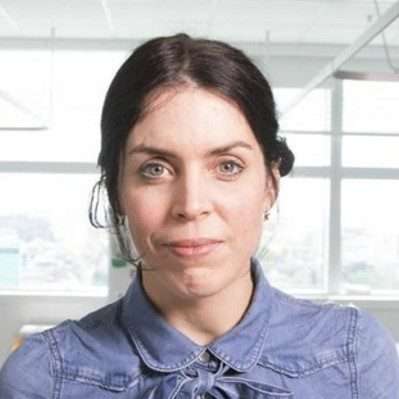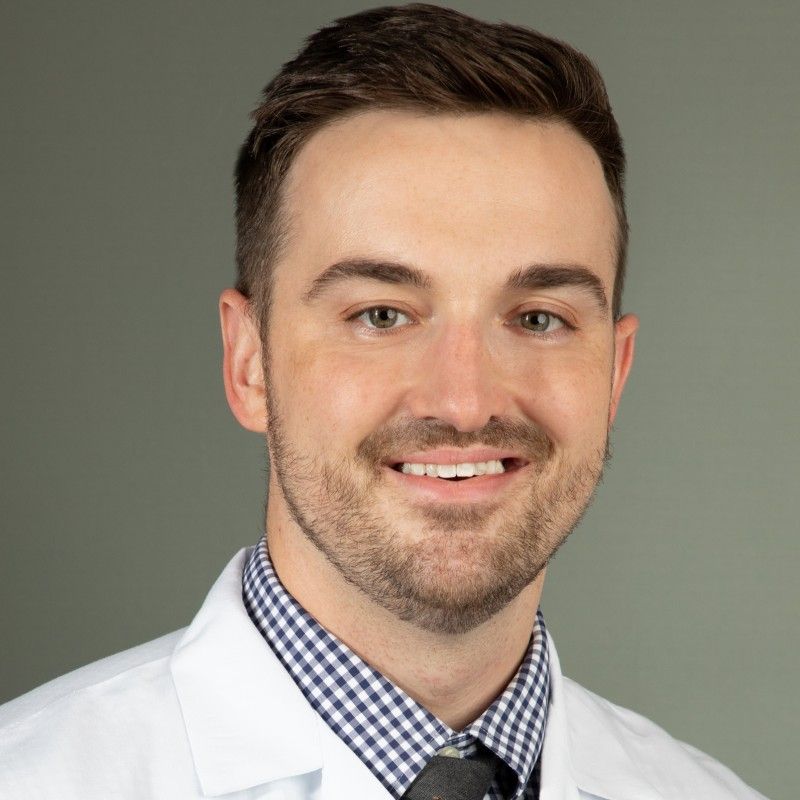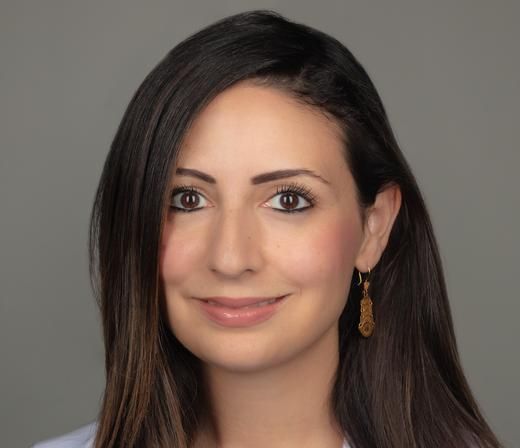- Center on Health Equity & Access
- Clinical
- Health Care Cost
- Health Care Delivery
- Insurance
- Policy
- Technology
- Value-Based Care
Looking Ahead at CAR T-Cell Therapy for R/R Acute Lymphoblastic Leukemia
Presentations on the first day of the 2023 American Society of Clinical Oncology Annual Meeting covered data on a split dose CAR T-cell therapy and a CAR T therapy manufactured with TKI.
Less than a decade ago, the big news in treating relapsed or refractory (R/R) acute lymphoblastic leukemia (ALL) was the accelerated approval for the bispecific T-cell engager blinatumomab (Blincyto, Amgen), which has since received full approval to treat both adult and pediatric patients with R/R B-cell ALL or those with minimal residual disease at baseline after remission.1
Since that time, approvals in chimeric antigen receptor (CAR) T-cell therapy have revolutionized treatment of B-cell ALL; first came tisagenlecleucel, or tisa-cel (Kymriah, Novartis) for pediatric and young adult patients,2 followed by brexucabtagene autoleucel, or brexu-cel (Tecartus, Kite) for adults.3 But after brexu-cel reached the market, questions remained: what about patients with comorbidities or central nervous system (CNS) lesions, who had been excluded from clinical trials? Could more be done to limit toxicity?
And can the basic strategy of CAR T-cell therapy—collecting healthy T-cells and engineering them to fight cancer—be reconfigured for the 25% of adult ALL patients who have T-cell driven disease?4
Three abstracts examining these questions led off the June 2 oral abstract session on Leukemia, Myelodysplastic Syndromes, and Allotransplant at the 2023 American Society of Clinical Oncology Annual Meeting. A discussant, Rawan Faramand, MD, from H. Lee Moffitt Cancer and Research Institute, highlighted the challenges of deciding where stem cell transplant fits and other therapies fit into the treatment sequence with the arrival of CAR T-cell therapy, and how the ability to measure minimal residual disease (MRD) has been a “game changer,” but raised its own questions.
Split dosing with obe-cel in FELIX. Claire Roddie, PhD, FRCPath, MBChB, MRCP, associate professor at University College London, presented topline
Roddie

results for the pivotal FELIX study examining obecabtagene autocleucel (obe-cel) in adult R/R B-cell ALL.5 Obe-cel is an autologous CD19 CAR that Roddie said employs “fast on, fast off” binding domain, which is designed to limitimmunotoxicity and improve persistence. The therapy is being studied in adult and pediatric patients in FELIX (NCT04404660), a multicenter, global, single-arm phase 1b/2 study involving patients with morphologic disease, meaning blasts constituted at least 5% of the bone marrow.
Roddie presented results for adult patients; 112 were enrolled and 94 were infused. Primary end point was overall remission rate (ORR), which was the proportion of patients achieving a complete remission (CR) or complete remission with incomplete count recovery (CRi), as assessed centrally. Secondary end points were duration of response (DOR), event-free survival, overall survival, MRD-negativity rate, and safety.
Roddie described how FELIX uses a split dosing strategy, in which patients received doses on day 1 and day 10; the dosing schedule is based on the percentage of blasts in the bone marrow prior to preconditioning for CAR T-cell treatment, a strategy designed to limit toxicity. As she explained, patients have the first dose, and then “can proceed with the day 10 dose, provided they haven’t had dose-limiting immunotoxicity in that intervening period.”
For the day 1 dose, she said. if patients have less than 20% of bone marrow blasts prior to preconditioning, they have a flat dose of 100 million CAR T cells. “But if you have more than 20% blasts, you’ll receive a flat dose of 10 million in CAR T cells.
“Now, you can go on to receive the second dose to take you up to the total dose of 410 million CAR T cells,” Roddie continued. “And, it’s important to note that 94% of the patients on this study received both obe-cel infusions.”
Patient characteristics included:
- The median patient age was 50 years (range, 20 to 81)
- Median prior therapies was 2; 29% had at least 3 lines of therapy
- 50% were refractory to the last line of therapy
- 26.6% Philadelphia chromosome positive (Ph+)
- Median bone marrow blasts at preconditioning, 41.1%
Results included the following:
- 96% reached their target dose
- Manufacturing turnaround: median 21 days from vein to release
- ORR 76% (95% CI, 66-84) P < .0001; (54.3% CR and 23.1% CRi)
“What’s more, those responses were deep responses—97% of our responders were 10-4 by flow symmetry,” Roddie said, noting that 61% of responders were in ongoing remission without additional therapies for 9.5 months.
Overall, incidence of cytokine release syndrome (CRS) was largely grade 1-2; 75.5% of patients had CRS, with 3.2% having CRS of grade 3 or higher. More patients with bone marrow blasts above 20% had CRS. Patients with bone marrow blasts above 20% were also more likely to develop Immune effector cell-associated neurotoxicity syndrome (ICANS) and develop cases grade 3 or higher. ICANS affected 25.5% of patients, including 7.4% with grade 3 or higher. There was 1 death on study due attributed to obe-cel, from hemophagocytic lymphohistiocytosis (HLH) and neutropenic sepsis.
Roddie pointed to a graph that highlighted the high initial expansion of the CAR as well as “durable persistence up to and beyond 3 years in a proportion of patients.”
“This is a safe product to give to those older comorbid patients,” she said. “I think we really need to acknowledge the manufacturing. Despite the adverse conditions for the manufacturer, the circulating disease… the manufacturing process was very robust.”
Obi-cel is being developed by Autolus Therapeutics.
Real-world results for brexu-cel. Greg Roloff, MD, senior hematology/oncology fellow at the University of Chicago, presented the
Roloff

first results on behalf of ROCCA (Real-world Outcomes Collaborative of CAR T-cell Therapy in Adult ALL), which was created in 2022 after brexu-cel reached the market.6
“Despite the fact that most individuals respond well to upfront therapy, relapse rates approach 50% in some series,” Roloff said. “And some expected survival falls precipitously with subsequent relapse episodes.”
Allogeneic transplant works for some, but most patients do not proceed to this step. “Newer agents like blinatumomab or inotuzumab have proven critically important. But responses for some patients [with] these agents are not incredibly long-lasting. Therefore, the development of newer therapies capable of producing durable remissions is an important objective in our field,” he said.
Enter ZUMA-3,7 which showed that brexu-cel, a CD19-directed autologous CAR T-cell therapy with a CD28 costimulatory domain, showed a 71% CR/CRi in the first assessment of patients with B-cell ALL, with 58% relapse-free survival at 6 months. Following FDA approval in October 2021, Roloff said, “Within the first year of use, there was interest brewing among the cell therapy odctors to get a sense of how this product was performing on the ground.”
Starting with 13 centers, the ROCCA effort began using a HIPAA-complaint database to build a comprehensive data set on R/R B-cell ALL. Data collection began in October 2022, a year after brexu-cel approval, he said. At the time of ROCCA’s submission to ASCO, the cohort covered 76 patients who had received brexu-cel. Among key patient characteristics:
- Median age, 44; range, 18 to 81 years
- 46% female, 25% Hispanic
- 29% Ph+
- Median lines of therapy, 4; range 1-9; prior blinotumumab, 53%; prior inotuzumab, 37%; prior allo-transplant, 46%
- CNS disease, 11%; active disease at aphresis, 69%; 31% did not have evidence of morphologic disease (required for ZUMA-3).
Roloff first presented the toxicity data first, showing that 17% had no CRS, while most 62% had some CRS, most of it low grade. Five patients (6.6%) had grade 3 to 4 CRS.
“Neurotoxicity was more of a mixed bag,” he said, noting that 30 patients had no ICANS, but 28 patients (38%) had severe (grade 3 or 4) ICANS, and 17 patients (22%) had low-grade ICANS.
For responses, 70 patients reached a day 28 evaluation; some had clinically deteriorated and did not have an assessment. Of the 70, 64 (91%), had a CR or CRi, and 80% of these were MRD-negative remissions. Of the 10 patients (11%) with CNS, 80% saw clearance of leukemia from their CNS, including 7 of 8 with category 3 disease.
At 6 months post-infusion, results were as follows:
- 83% of patients who were MRD-negative at day 28 were in remission
- For those with CR / MRD-positive at day 28, 35% were in remission
- Among 9 patients receiving a tyrosine kinase inhibitor (TKI) or POMP maintenance post brexu-cel, 89% were in remission.
- Among 11 patients who proceeded to transplant, 81% were in remission.
Progression-free survival (PFS) and overall survival (OS) data for the 70 evaluable patients at 6 months:
- PFS 78% for those CR / MRD-negative at day 28; 94% OS
- PFS 35% for those CR / MRD-positive at day 28; 100% OS
- PFS 0% for those with no response; 50% OS
An analysis to identify predictors of achieving MRD-negative CRD did not yield factors of statistical significance, except that younger patients fared better than those older than 60 years, Roloff said. In time, it is expected that more data will yield more meaningful results. The ROCCA effort has now grown to more than 30 centers, he said. “I’m excited to see what we do with the data next.”
Adding TKI to CD5 CAR T in T-ALL. LaQuisa Hill, MD, assistant professor in hematology/oncology at the Center for Gene Therapy, Baylor College of
Hill

Medicine,offered a 2-part solution on how to overcome the challenges of CAR T-cell therapy in T-cell ALL.
Unlike the advances in treatment for B-cell ALL, Hill said, “development of autologous CAR T-cell platforms for T-cell driven malignancies has lagged behind, and that is due primarily to 3 major challenges.” She listed them:
- Fratricide, or self-targeting of the CAR T cells given shared antigen expression “resulting in impaired expansion and efficacy”;
- Targeting or normal T cells, causing T cell ablation and immunodeficiency “that is not easily corrected” as in B-cell driven cancer;
- Risk of transduction of malignant T cells, which could create a mechanism of immune evasion.
As Hill explained, CD5 is highly expressed in 85% to 95% of T-cell driven ALL, and earlier research showed that CD5 CAR T cells expanded “with minimal fracticide,” due to the loss of CD5 expression on the cell surface. Thus, the MAGENTA trial (NCT03081910) opened to evaluate patients receiving a single infusion of CD5 CAR T-cells at 1 of 3 dose levels.8 Initial enrollment was 33 patients—24 adults and 9 pediatric patients. For this group, 27 lines of therapy were manufactured; 3 were not released. Fourteen patients were treated: 8 adults, and 6 pediatric patients.
Hill first reviewed characteristics from 8 patients in cohort 1, who ranged in age from 11 to 51 and had received a median of 5 prior lines of therapy. Although the safety profile was encouraging, the responses were not: 2 patients had low-grade CRS, 1 had ICANS, and 1 had a grade 3 infection. But only 1 patient had CR with MRD-positive, which lasted 6 weeks; the rest had stable or progressive disease.
“At the time of progression or disease reevaluation, none of the patients had demonstrated loss of CD5 on the surface of the malignant blast,” Hill explained. Investigators examined the final cell products and saw that the CD5 CAR T cells “were undergoing chronic CAR signaling, which resulted in progressive depletion of both naïve T cells and central memory T cells during the manufacturing process,” which would harm both T cell function and anti-tumor activity.
Thus, came the shift to using TKI inhibitors during expansion, which would block T cell activation by inhibiting certain T cell receptor kinases. The team used ibrutinib and dasatinib during expansion. “We were able to see a significant improvement in the number of naïve T cells when compared with the control CD5 CARs,” which had been made without the TKIs, Hill explained. “We noted an impressive improvement in the expansion of the CAR T cells.”
With a modified protocol, TKI use was added to the manufacturing process on the next cohort of patients. Hill presented data from patient samples, explaining, “When we manufactured the CAR T cells in the presence of TKIs, we saw significant increases in the naïve T-cell repertoire, as well as had CAR T cells that had a non-exhausted phenotype.
In addition, the team studied a patients who received donor-derived T-cells manufactured with TKI, for patients who had failed a prior transplant. “What we saw was that healthy donor T cells from the prior donors were significantly more enriched, more naïve to the cytotoxic T cells.”
One pediatric patient who did not respond in cohort 1 re-enrolled; thus, 7 patients in cohort 2 were treated with TKI manufactured products (4 with autologous CD5 CAR T cells, 3 with donor-derived T cells), there were 4 total responders who achieved MRD-negative remission—2 in each group. “Overall, there were no big differences between the groups,” Hill said. Two patients later proceeded to allo-transplant.
Surprisingly, there was no increase in CRS or ICANS, but Hill cautioned 2 patients had elevated Epstein-Barr virus (EBV)-related posttransplant lymphoproliferative disease (PTLD), including one patient who had a reaction many months later. “More data and monitoring will be needed to determine the true relationship of the EBV reactivation in PTLD as it is related to the CAR T cells,” Hill said.
“Much Ado About CAR T in ALL”. Faramand said the title of her talk highlighted how far the field has come since the blinatumomab approval in 2014.1 “Is obecabtagene the next therapy to be approved?” she asked.
Faramand

Faramand, listed as second author on the ROCCA abstract, traced approvals from blinatumomab through brexu-cel, noting that efficacy end points have steadily improved, as has management of CRS and ICANS. With obe-cel, there is another leap in toxicity management, she said, along with “excellent expansion and persistence.”
These successes raise questions. “Does persistence of these CAR T cells inform durability of response?” she asked. What is the role of consolidated allogeneic stem cell transplant?
“As we have a growing number of CAR T cell survivors, what about late toxicities, such as cytokines and/or infections?” She noted these can be related to higher doses of lymphodepleting drugs.
Faramand asked whether trials are enrolling enough minority patients, noting that Hispanic patients are more likely to develop ALL, as seen in the ROCCA group study.
The real-world data produced by ROCCA also raises questions. Among them: Is including patients with CNS the reason ICANS rates are higher? What about the lack of uniformity in MRD testing?
“We know that MRD testing has been a game changer for ALL,” she said. “What is the optimal way to measure MRD and monitor these patients?”
Data from Hill’s study on the use of TKI with CAR T cell therapy for T-cell driven ALL will need to mature to fully understand durability of responses and long-term complications, Faramand said. Nonetheless, “I’m encouraged by this data and look forward to further studies looking at CAR T cell therapies in this population.”
References
1. FDA grants full approval for Blincyto (blinatumomab) to treat minimal residual disease-postive B-cell precursor acute lymphoblastic leukemia. News release. PR Newswire. June 21, 2023. Accessed June 26, 2023. https://prn.to/46pqZvh
2. FDA approves tisaglecleucel in B-cell ALL and tocilizumab for cytokine release syndrome. News release. FDA newsroom. Updated September 7, 2017. Accessed June 26, 2023. https://bit.ly/3XsYitb
3. FDA approves brexucabtagene autoleucel in relapsed or refractory B-cell acute lymphoblastic leukemia. News release. FDA newsroom. October 1, 2021. Accessed June 26, 2023. https://bit.ly/3mciuB1
4. Haseltine WA. CAR T-cell like therapy to treat T-cell leukemia (T-ALL)? Forbes. February 13, 2023. Accessed June 26, 2023. https://bit.ly/440NHrY
5. Roddie C, Sandhu KS, Tholouli E, et al. Safety and efficacy of obecabtagene autoleucel (obe-cel, AUTO1), a fast-off rate CD19 CAR, in relapsed/refractory adult B-cell acute lymphoblastic leukemia (r/r B-ALL): Top line results of the pivotal FELIX study. J Clin Oncol. 2023;41 (suppl 16): abstr 7000. doi: 10.1200/JCO.2023.41.16_suppl.7000
6. Roloff G, Faramand R, Aldoss I, et al.Outcomes following brexucabtagene autoleucel administered as an FDA-approved therapy for adults with relapsed/refractory B-ALL. J Clin Oncol. 2023;41(suppl 16): abstr 7001. doi: 10.1200/JCO.2023.41.16_suppl.7001
7. Shah BD, Ghobadi A, Oluwole OO, et al. KTE-X19 for relapsed or refractory adult B-cell acute lymphoblastic leukaemia: phase 2 results of the single-arm, open-label, multicentre ZUMA-3 study. Lancet. 2021;398(10299):491-502. doi: 10.1016/S0140-6736(21)01222-8
8. Hill LC, Rouce RH, Smith TS, et al. Enhanced anti-tumor activity of CD5 CAR T cells manufactured with tyrosine kinase inhibitors in patients with relapsed/refractory T-ALL. J Clin Oncol. 2023;41(suppl 16): abstr 7002. doi: 10.1200/JCO.2023.41.16_suppl.7002
The Importance of Examining and Preventing Atrial Fibrillation
August 29th 2023At this year’s American Society for Preventive Cardiology Congress on CVD Prevention, Emelia J. Benjamin, MD, ScM, delivered the Honorary Fellow Award Lecture, “The Imperative to Focus on the Prevention of Atrial Fibrillation,” as the recipient of this year’s Honorary Fellow of the American Society for Preventive Cardiology award.
Listen
Promoting Equity in Public Health: Policy, Investment, and Community Engagement Solutions
June 28th 2022On this episode of Managed Care Cast, we speak with Georges C. Benjamin, MD, executive director of the American Public Health Association, on the core takeaways of his keynote session at AHIP 2022 on public health policy and other solutions to promote equitable health and well-being.
Listen
Tech Offers Empathy but Digital Divide Looms in Respiratory Health Care
November 25th 2025While artificial intelligence showed empathy and precision in respiratory health care, its equitable adoption is paramount to prevent the widening digital divide, as highlighted at the European Respiratory Society Congress 2025.
Read More
